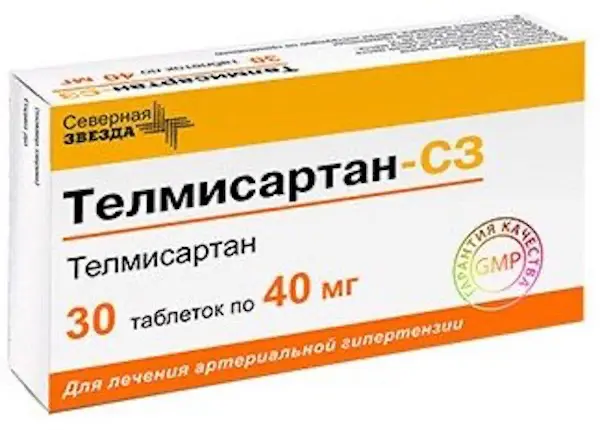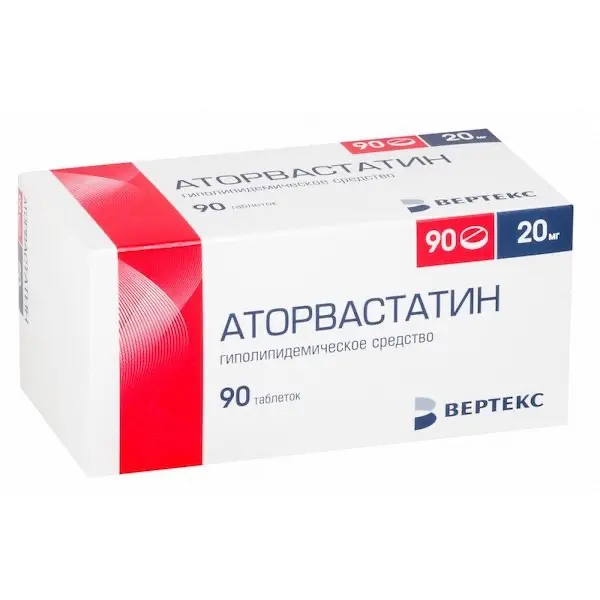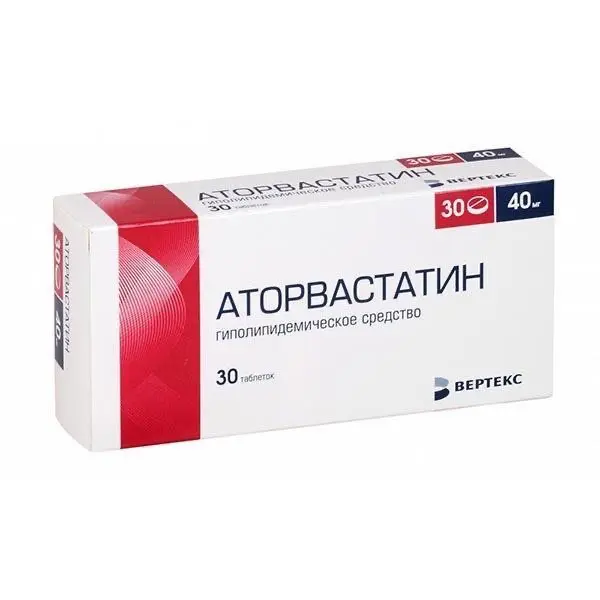Description
Telmisartan-SZ Pharmacodynamics
Telmisartan is a specific angiotensin II receptor antagonist (ARA II) (type AT1) and has a high affinity for the AT1 subtype of angiotensin II receptor, through which angiotensin II action is realized. It displaces angiotensin II from binding to the receptor with no agonist effect against this receptor.
Telmisartan binds only to the AT1 subtype of the angiotensin II receptor.
The binding is long-lasting. It has no affinity for other receptors, including AT2 receptors and other less studied angiotensin receptors. The functional significance of these receptors, as well as the effect of their possible overstimulation by angiotensin II, whose concentration is increased by telmisartan, has not been studied. Telmisartan reduces plasma aldosterone concentration, does not reduce plasma renin activity and does not block ion channels. Telmisartan does not inhibit angiotensin-converting enzyme (ACE, kininase II), which also catalyzes bradykinin degradation. This avoids the side effects associated with bradykinin action (e.g., dry cough).
Arterial hypertension.
Telmisartan at a dose of 80 mg completely blocks the hypertensive effects of angiotensin II in patients. The onset of antihypertensive action is noted within 3 hours after the first dose of telmisartan. The action of the drug persists for 24 hours and remains significant up to 48 hours. A pronounced antihypertensive effect usually develops after 4-8 weeks of regular telmisartan use.
In patients with arterial hypertension, telmisartan reduces both systolic and diastolic blood pressure (BP) without affecting heart rate (HR).
In the case of abrupt telmisartan withdrawal, BP gradually (over several days) returns to baseline values without the development of “withdrawal” syndrome.
In comparative clinical studies it has been shown that the antihypertensive effect of telmisartan is comparable to the antihypertensive effect of drugs of other classes (amlodipine, atenolol, enalapril, hydrochlorothiazide and lisinopril). The incidence of “dry” cough was significantly lower in patients receiving telmisartan compared with those receiving ACE inhibitors.
Prevention of cardiovascular disease
In patients aged 55 years or older with coronary heart disease, stroke, transient ischemic attack, peripheral artery disease, or with a history of complications of type 2 diabetes (e.g., retinopathy, left ventricular hypertrophy, macro- or microalbuminuria) at risk for cardiovascular complications. Telmisartan had an effect similar to that of ramipril in reducing the primary combined end point: cardiovascular mortality, nonfatal myocardial infarction, nonfatal stroke, or hospitalization for chronic heart failure.
Telmisartan was as effective as ramipril in reducing the incidence of secondary points: cardiovascular mortality, nonfatal myocardial infarction, or nonfatal stroke.
The efficacy of reducing the risk of cardiovascular mortality with telmisartan doses less than 80 mg has not been studied.
Dry cough and angioedema have been less frequently described with telmisartan than with ramipril, while arterial hypotension was more frequent with telmisartan.
Pediatric and adolescent patients
The safety and efficacy of telmisartan in children and adolescents younger than 18 years have not been established.
Indications
– Arterial hypertension;
– Reduction of cardiovascular morbidity and mortality in patients aged 55 years and older with a high risk of cardiovascular disease.
Contraindications
– Hypersensitivity to the active substance or excipients of the drug;
– Pregnancy and breast-feeding;
– Obstructive diseases of the biliary tract;
– severe hepatic function impairment (class C according to the Child-Pugh classification);
– concomitant use with aliskiren or aliskiren-containing drugs in patients with diabetes mellitus and/or moderate or severe impaired renal function (glomerular filtration rate (GFR) less than 60 ml/min/1.73 m2 body surface area);
– concomitant use with angiotensin-converting enzyme inhibitors in patients with diabetic nephropathy;
– lactase deficiency, lactose intolerance, glucose-galactose malabsorption;
– age less than 18 years (efficacy and safety have not been established).
Dosage and administration
- Oral, regardless of the time of the meal.
- Arterial hypertension
- The initial recommended dose is 1 tablet (40 mg) of Telmisartan once daily. In some patients, a daily dose of 20 mg of Telmisartan may be effective. A dose of 20 mg can be obtained by dividing the 40 mg tablet in half at risk. In cases where the therapeutic effect is not achieved, the maximum recommended dose of Telmisartan may be increased to 80 mg once daily. Alternatively, the drug can be taken in combination with thiazide diuretics, such as hydrochlorothiazide, which has an additional antihypertensive effect when combined with telmisartan. If it is necessary to increase the dose, it should be taken into account that the maximum antihypertensive effect usually develops 4-8 weeks after the start of treatment (see section “Pharmacodynamics”).
- Reduction of cardiovascular morbidity and mortality
- The recommended dose is 1 tablet of Telmisartan 80 mg once daily.
- Regular control of BP and, if necessary, adjustment of the dose of drugs that reduce BP is recommended.
- Special patient groups
- Renal failure.
- No dose adjustment is required for patients with mild to moderate renal impairment. There is limited experience with telmisartan in patients with severe renal impairment or patients on hemodialysis. In these patients, a lower starting dose of 20 mg per day is recommended (see section “Cautions”).
- Liver failure.
- In patients with mild and moderate hepatic impairment (Child-Pugh class A and B, respectively), the daily dose of Telmisartan should not exceed 40 mg. The drug is contraindicated in patients with severe hepatic impairment (Child-Pugh class C) (see section “Contraindications”).
- Elderly patients
- No dose adjustment is required for elderly patients.





